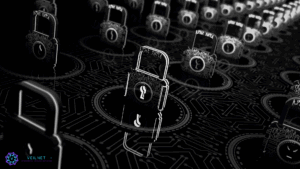VeilNet is entering a bold new phase this August. With a major upgrade across our architecture, identity system, user access model, and control messaging security, we are redefining what a post-quantum, decentralized VPN can be.
Here’s a deep dive into what’s coming:
🔁 1. VeilNet Conflux – One binary to rule them all
The VeilNet Conflux release marks the convergence of the Rift (client/portal) and Portal (exit node) binaries into a single, unified executable.
All platforms supported (Linux, Windows, macOS, Android, Docker, Kubernetes)
Minimalistic configuration: Deploy with just three parameters: a token, a mode (rift/portal), and optional alias.
Built-in stream-level queue optimizer:
- Enables parallel encryption/decryption and transmit/receive operations per stream
- Greatly reduces coroutine count while improving throughput and responsiveness
Streamlined lifecycle:
- Connect/disconnect operations are smoother and more stable
- Offline portals can now be discovered near real-time, dramatically improving resilience and reconnection time
🌌 2. Domain → Plane – A Semantic Evolution
To better reflect our architecture’s vision, the term “domain” is being retired and replaced with “plane”, representing planes of existence across the VeilNet fabric.
Planes continue to serve as secure, isolated layers of communication, but now with a more intuitive metaphor aligned to VeilNet’s portal-based design.
👥 3. Team Management System – Share Access by Logic, Not IP
You asked, we built it.
The new Team System allows users to invite others to join a Team. Within a Team:
- Members automatically gain access to each other’s portals
- Private planes can be shared selectively across team members
- Access control shifts from network engineering to simple, flexible business logic
Whether you’re an individual user collaborating across devices, or an enterprise managing layered access across divisions, Teams make it effortless.
🔐 4. Post-Quantum Authentication with ML-DSA
All control plane messaging now adopts FIPS 204 Dilithium for digital signature authentication under a Trust-On-First-Use (TOFU) scheme.
- Ensures message authenticity and integrity
- Maintains complete anonymity with no need to expose traditional identities
This positions VeilNet as the first VPN to support post-quantum secure signatures in runtime control logic.
🛡️ 5. Guardian Overhaul – Security by Design
The Guardian (our user and device management system) has been completely overhauled:
- Clear separation between Conflux access tokens and user API tokens
- Dedicated service accounts for programmatic access
- Redesigned API with tighter access controls and isolation by default
This reinforces Guardian as a trusted identity fabric while keeping its trust boundaries minimal and auditable.
🎨 6. UI/UX Refresh – Cleaner, Faster, Smarter
Both the VeilNet Application and Guardian dashboard are receiving a design update:
- Smoother flows for setup, access, and visibility
- Updated visuals to match VeilNet’s aesthetic: dark, focused, elegant
- Improved mobile responsiveness and feedback loops

